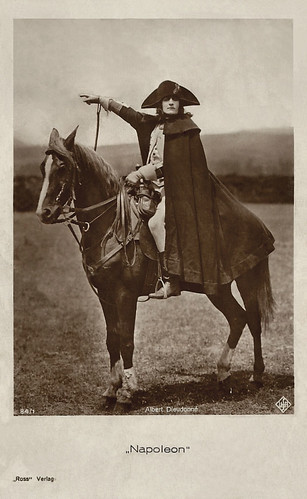
German postcard by Ross Verlag, no. 84/1, 1925-1935. Photo: Ufa. Albert Dieudonné as the title character in Abel Gance’s epic film Napoléon (1927).
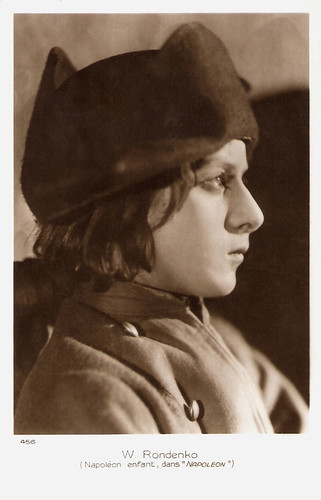
French postcard by Cinémagazine-Edition, no. 456. Photo: Vladimir Roudenko as the young Napoléon in Napoléon (Abel Gance, 1927).

French postcard by Cinémagazine-Edition, Paris, no. 458. Photo: Annabella as Violine in Napoléon (Abel Gance, 1927).
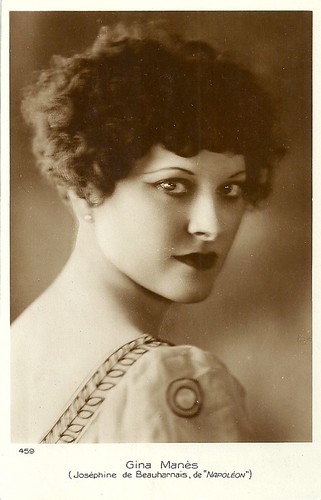
French postcard by Editions Cinémagazines, no. 459. Photo: Gina Manès as Josephine de Beauharnais in Napoléon (Abel Gance, 1927).
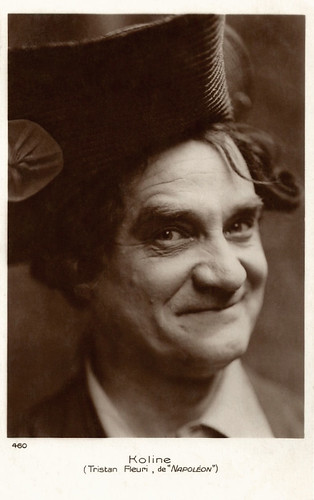
French postcard by Editions Cinémagazine, no. 460. Photo: Nicolas Koline as Tristan Fleuri in Napoléon (Abel Gance, 1927).
A chronology of great triumph and defeat
Napoléon (1927) begins in Brienne-le-Château with youthful Napoleon (Vladimir Roudenko) attending a military school where he manages a snowball fight like a military campaign, yet he suffers the insults of other boys.
The film continues a decade later with scenes of the French Revolution and Napoleon's (Albert Dieudonné) presence at the periphery as a young army lieutenant. He returns to visit his family home in Corsica but politics shift against him and put him in mortal danger. He flees, taking his family to France.
Serving as an officer of the artillery in the Siege of Toulon, Napoleon's genius for leadership is rewarded with a promotion to brigadier general. Jealous revolutionaries imprison Napoleon but then the political tide turns against the Revolution's own leaders. Napoleon leaves prison, forming plans to invade Italy.
He falls in love with the beautiful Joséphine de Beauharnais (Gina Manès). The emergency government charges him with the task of protecting the National Assembly. Succeeding in this he is promoted to Commander-in-Chief of the Army of the Interior, and he marries Joséphine. He takes control of the army that protects the French–Italian border and propels it to victory in an invasion of Italy.
Many innovative techniques were used to make the film, including fast cutting, extensive close-ups, a wide variety of hand-held camera shots, location shooting, point of view shots, multiple-camera setups, multiple exposure, superimposition, underwater camera, kaleidoscopic images, film tinting, split-screen and mosaic shots, multi-screen projection, and other visual effects.
Director, writer, and producer Abel Gance planned for Napoléon to be the first of six films about Napoleon's career, a chronology of great triumph and defeat ending in Napoleon's death in exile on the island of Saint Helena. After the difficulties encountered in making the first film, Gance realised that the costs involved would make the full project impossible.
Napoléon was first released in a gala at the Palais Garnier (then the home of the Paris Opera) on 7 April 1927. Napoléon had been screened in only eight European cities when Metro-Goldwyn-Mayer bought the rights to it, but after screening it in London, it was cut drastically in length, and only the central panel of the three-screen Polyvision sequences was retained before it was put on limited release in the United States. There, the film was indifferently received at a time when talkies were just starting to appear.
The film was restored in 1981 after twenty years' work by silent film historian Kevin Brownlow.
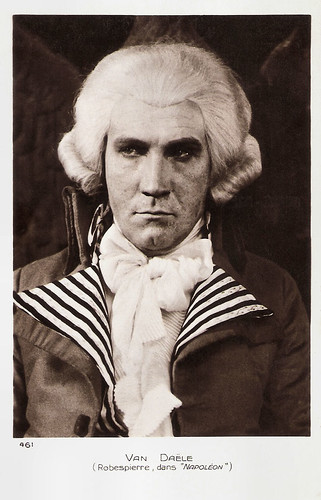
French postcard by Editions Cinémagazine, no. 461. Photo: Edmond Van Daële as Robespierre in Napoléon (Abel Gance, 1927).

French postcard by Editions Cinémagazine, no. 469. Albert Dieudonné as Napoleón in Napoléon (Abel Gance, 1927).

French postcard by Editions Cinémagazine, no. 473. Photo: publicity still for Napoléon (Abel Gance, 1927), with Abel Gance himself as Saint-Just.
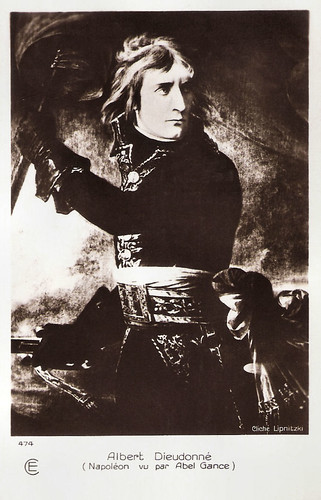
French postcard by Editions Cinémagazine, no. 474. Photo: Lipnitzky. Publicity still for Napoléon (Abel Gance, 1927), with Albert Dieudonné as Napoléon. The postcard is a pastiche of the famous portrait of Bonaparte at Arcole, 1796, by Baron Antoine-Jean Gros. See more.
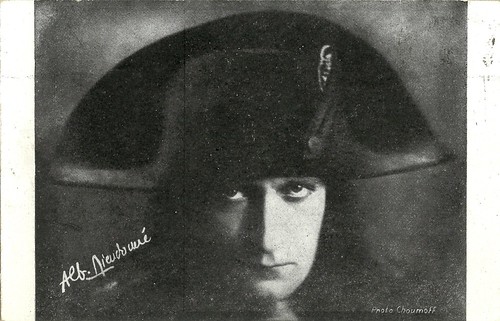
French postcard. Photo Choumoff. Albert Dieudonné as Napoleon. The retro of the card makes publicity for Dieudonné in a stage version 'Bonaparte' at the Theatre de la Renaissance.
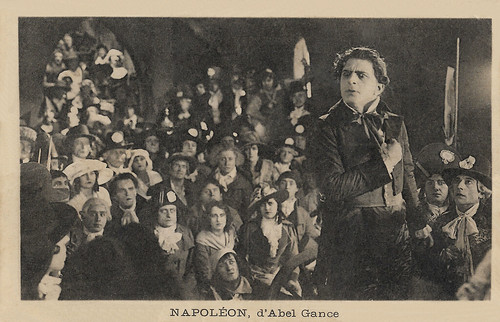
French postcard by Imp. Catala Frères, Paris. Photo: Socété Générale de Films, Paris. Acho Chakatouny as Pozzo di Borgo in Napoléon (Abel Gance, 1927).
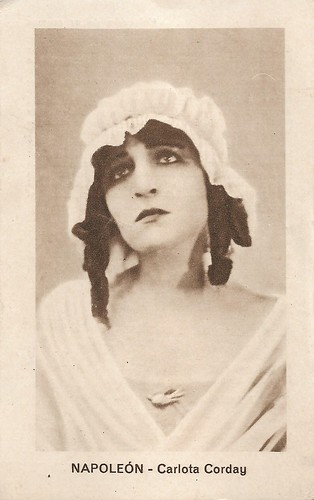
Spanish minicard by Chocolate E. Juncosa, Barcelona, no. 21 of series of 21 collector's cards (cromos). Marguerite Gance as Charlotte Corday in Napoléon (Abel Gance, 1927).
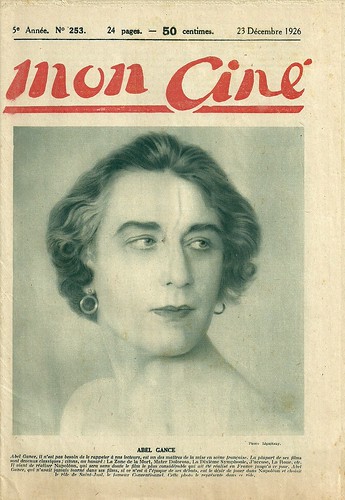
Director/actor Abel Gance on the cover of the French film journal Mon Ciné, no. 253, V, 23 December 1926. Gance is groomed as the character he played in Napoléon (1927), that of Saint-Just, one of the leading men of the French Terror.
Sources: Michael Brooke (IMDb), Wikipedia, and IMDb.
This post was last updated on 9 January 2022.
No comments:
Post a Comment